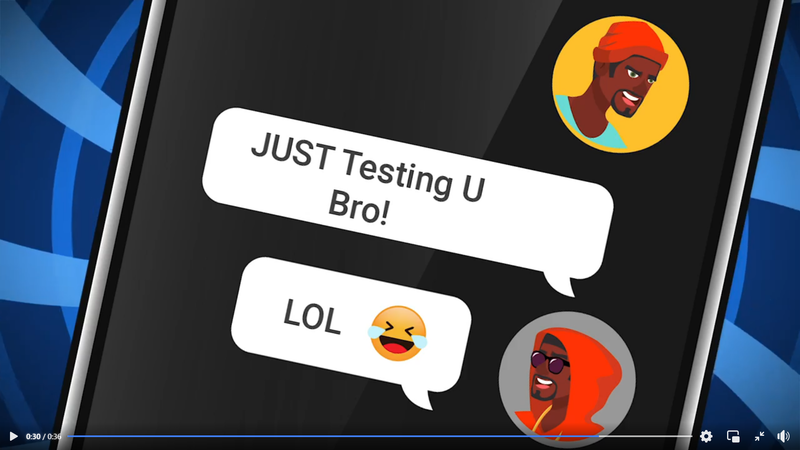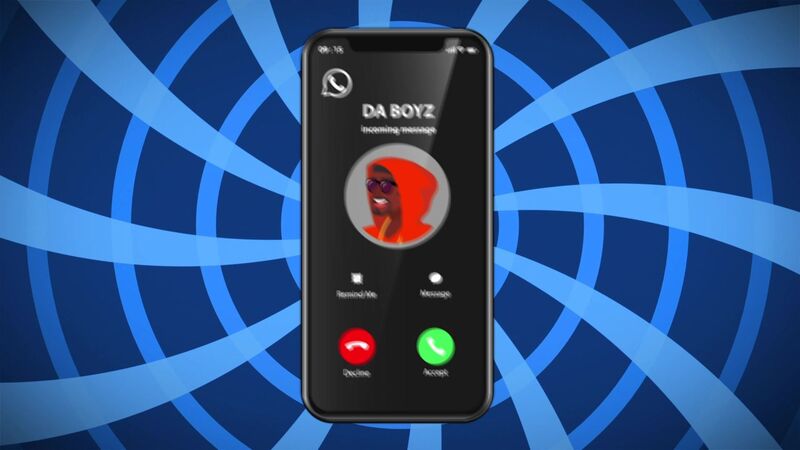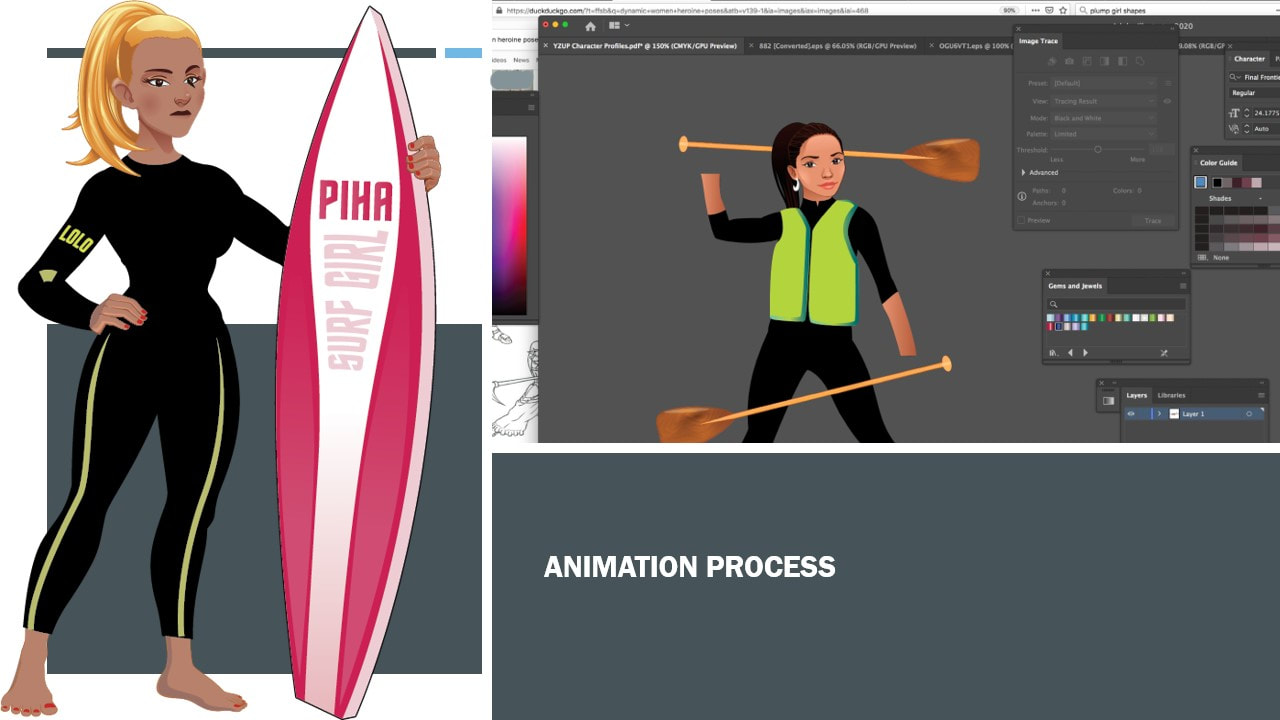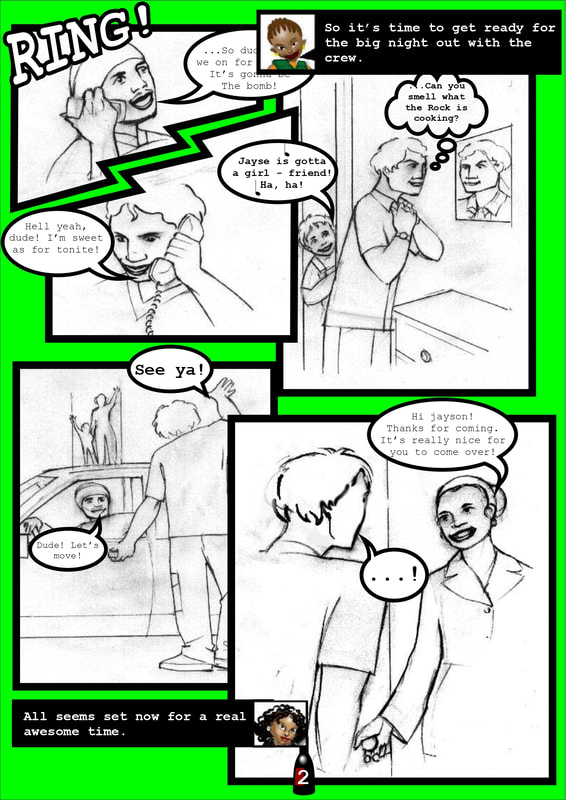YZUP edutainment was created by youth work, creative director, health promotion innovator Sjimmy Fransen. Each narrative draws on the shared stories of whanau participants and engaged designers, media industry people, and youth workers who helped shape community-relevant material which was then community tested and produced. The original characters; Lolo (Surfer Girl), Daz (Air walker), Merekiri (Hip Hop Forever), Lance (Floor Master), Salote (Nesian Queen), and DJ (Wheels of steel), were based on real people's experiences and stories. YZUP aims to build public health-focused animated campaigns that are timely (i.e. 1-2 weeks to produce), culturally relevant, and respectful of the unique histories and experiences of our audiences and the stories told. This dedicated page will also include place-based community and engagement practice resources and videos for historical documentation.
What is Edutainment
Edutainment is any communication initiative that sets out to educate and entertain at the same time. It can be defined as the art of integrating social messages into popular and high quality communication formats. Tuhi Tuhi creates edutainment by facilitating story telling wananga to create informed, community and population connected resources.
Story telling throughout the ages
It was Aristotle’s belief that the lessons we enjoy most are the ones that we learn the best. But edutainment’s origins go back further than the Greek Philosopher – the method has, in fact, existed for as long as people have been telling stories as a way of teaching succeeding generations about the world we live in.
In recent years, the massive growth of the entertainment industry, and advances in communications infrastructure and technology, have greatly boosted the potential of this approach to contribute to health and social development.
Why use Edutainment for health and youth development
Our health and development communication objective is to impact on people’s knowledge, attitudes and practices, and thus help them to make informed choices about their health and development. Edutainment can have a direct impact on the knowledge, attitudes and practices of the target audience.
In a review of the literature on the effects of edutainment for health and communication programmes in developing nations,Corinne L. Shefners-Rogers and Everett M Rogers, of the University of New Mexico, conclude that, “The entertainment-education strategy has strong effects on behaviour change”, and that edutainment “can be an important catalyst for interpersonal communication, which in turn leads to individual behaviour change by audience members” (Rogers, EM and Shefner-Rogers, C.L. 1994).
Our Aotearoa developed health and development communication is to impact on the development of regional and national policy. Successful edutainment can achieve this objective, as it often has a direct impact on policy makers. This is because, firstly, the thorough research that goes into creating good edutainment will raise issues that the policy makers might not have been aware of, and will provide a springboard for public debate on these issues.
In addition the inclusive process of research and development followed in creating edutainment provides an ideal opportunity for people involved in the policy development to share ideas with other topic experts as well as with members of the communities who are affected by the policy.
YZUPWhanau Edutainment.
Rangatahi led design by process of online wananga, wellness storytelling created through these wananga that is told by animated characters and shared through social media. Utilising our rangatahi networks based on Kapa Haka, Waka Ama, PolyFest, Touch Rugby, netball and Te Reo interest.
The process of writing their stories is a recognized way of alleviating stress and providing recognition that they are cared for and recognized and that their stories and then are valuable. This research and evidence-based approach provides a platform for authentic groundbreaking indigenous story telling. (University of Massachusetts, health Promotion Practice 2013) Each character tells their own story and are associated by the characters design team they then lead the engagement with the rangatahi that are drawn to these characters and help create more stories of resilience, overcoming and whanaungatanga as strengths.
Edutainment is any communication initiative that sets out to educate and entertain at the same time. It can be defined as the art of integrating social messages into popular and high quality communication formats. Tuhi Tuhi creates edutainment by facilitating story telling wananga to create informed, community and population connected resources.
Story telling throughout the ages
It was Aristotle’s belief that the lessons we enjoy most are the ones that we learn the best. But edutainment’s origins go back further than the Greek Philosopher – the method has, in fact, existed for as long as people have been telling stories as a way of teaching succeeding generations about the world we live in.
In recent years, the massive growth of the entertainment industry, and advances in communications infrastructure and technology, have greatly boosted the potential of this approach to contribute to health and social development.
Why use Edutainment for health and youth development
Our health and development communication objective is to impact on people’s knowledge, attitudes and practices, and thus help them to make informed choices about their health and development. Edutainment can have a direct impact on the knowledge, attitudes and practices of the target audience.
In a review of the literature on the effects of edutainment for health and communication programmes in developing nations,Corinne L. Shefners-Rogers and Everett M Rogers, of the University of New Mexico, conclude that, “The entertainment-education strategy has strong effects on behaviour change”, and that edutainment “can be an important catalyst for interpersonal communication, which in turn leads to individual behaviour change by audience members” (Rogers, EM and Shefner-Rogers, C.L. 1994).
Our Aotearoa developed health and development communication is to impact on the development of regional and national policy. Successful edutainment can achieve this objective, as it often has a direct impact on policy makers. This is because, firstly, the thorough research that goes into creating good edutainment will raise issues that the policy makers might not have been aware of, and will provide a springboard for public debate on these issues.
In addition the inclusive process of research and development followed in creating edutainment provides an ideal opportunity for people involved in the policy development to share ideas with other topic experts as well as with members of the communities who are affected by the policy.
YZUPWhanau Edutainment.
Rangatahi led design by process of online wananga, wellness storytelling created through these wananga that is told by animated characters and shared through social media. Utilising our rangatahi networks based on Kapa Haka, Waka Ama, PolyFest, Touch Rugby, netball and Te Reo interest.
The process of writing their stories is a recognized way of alleviating stress and providing recognition that they are cared for and recognized and that their stories and then are valuable. This research and evidence-based approach provides a platform for authentic groundbreaking indigenous story telling. (University of Massachusetts, health Promotion Practice 2013) Each character tells their own story and are associated by the characters design team they then lead the engagement with the rangatahi that are drawn to these characters and help create more stories of resilience, overcoming and whanaungatanga as strengths.
Evaluations
| yzup_evaluation_april.docx | |
| File Size: | 22 kb |
| File Type: | docx |







